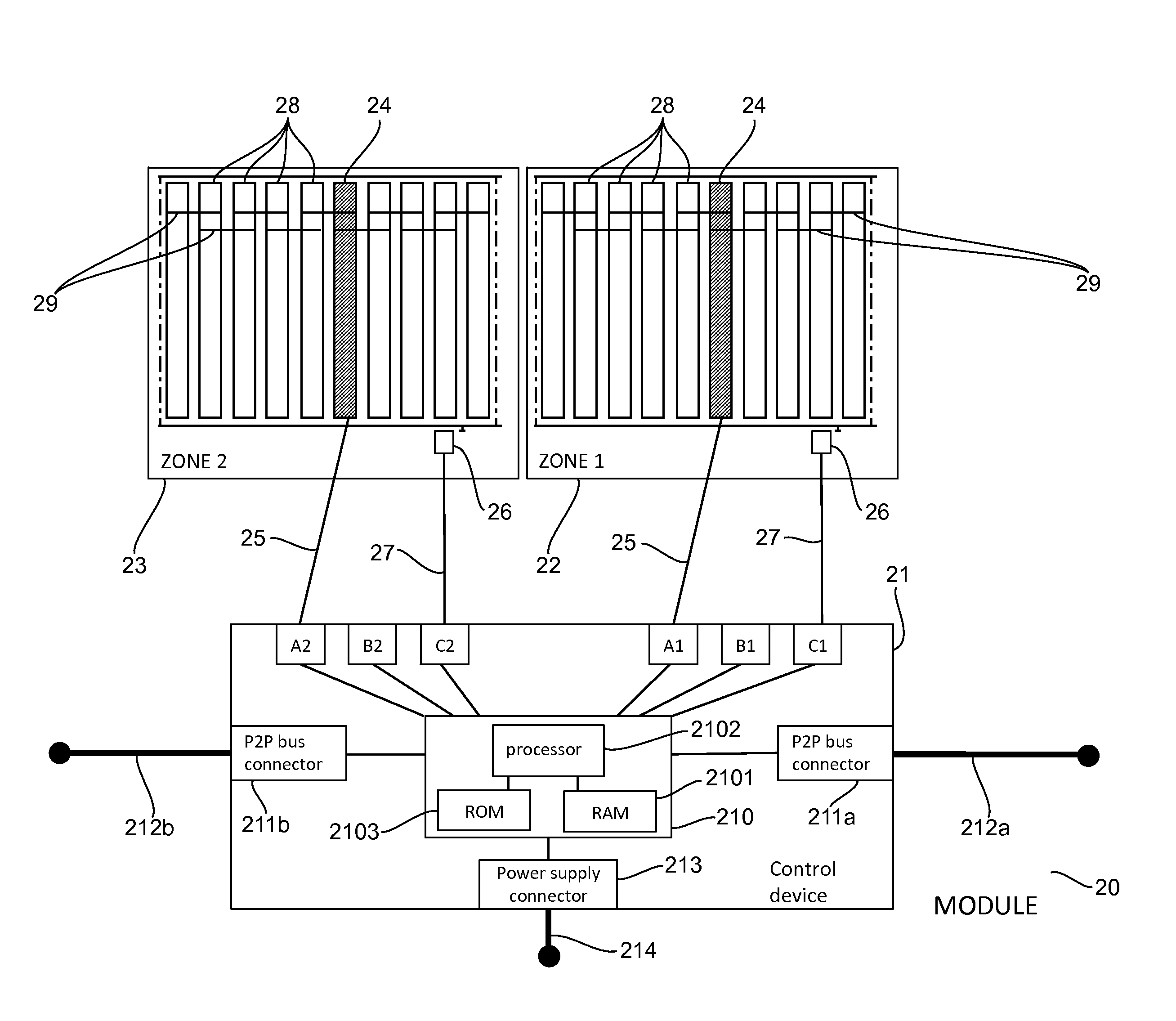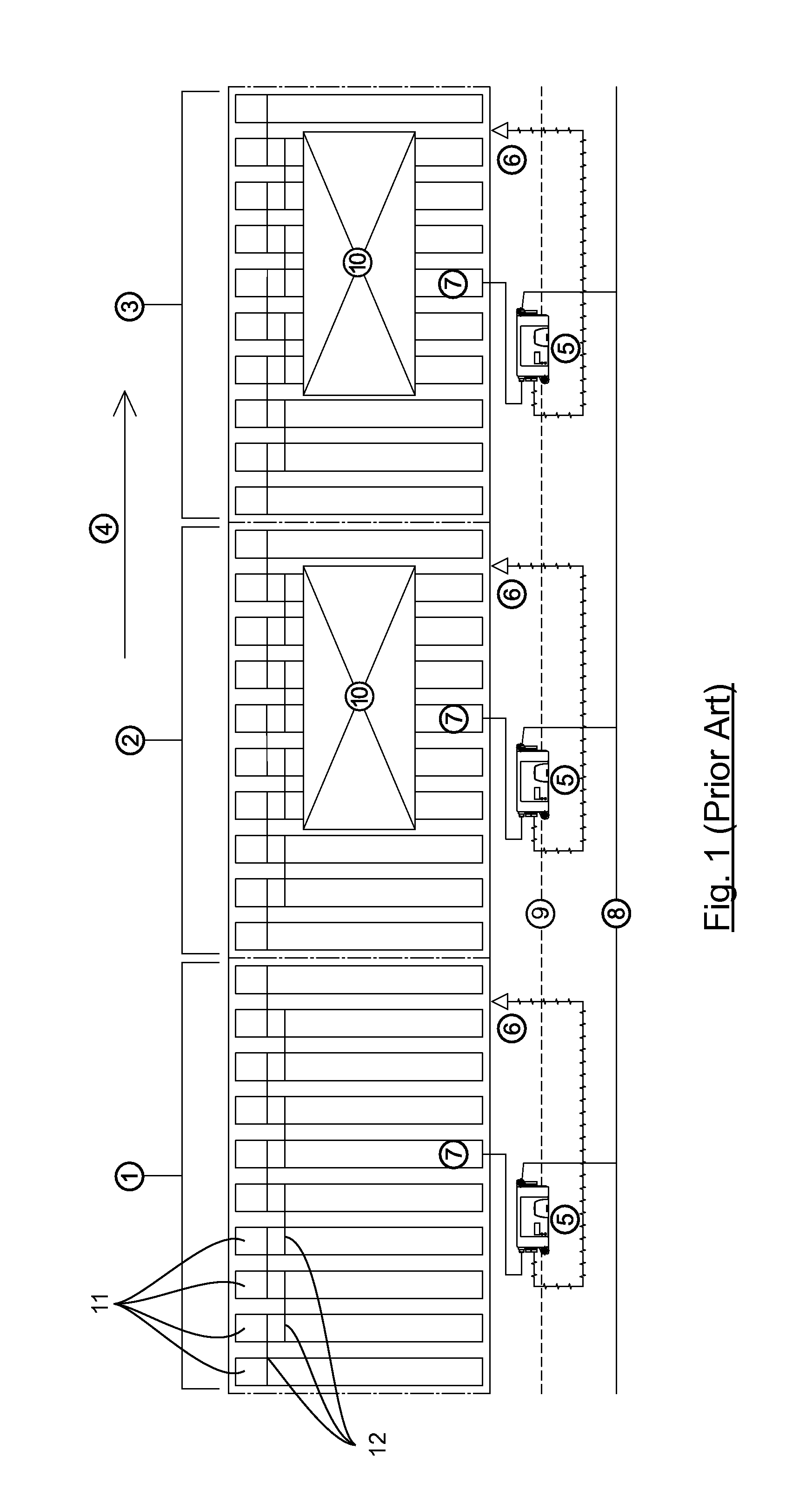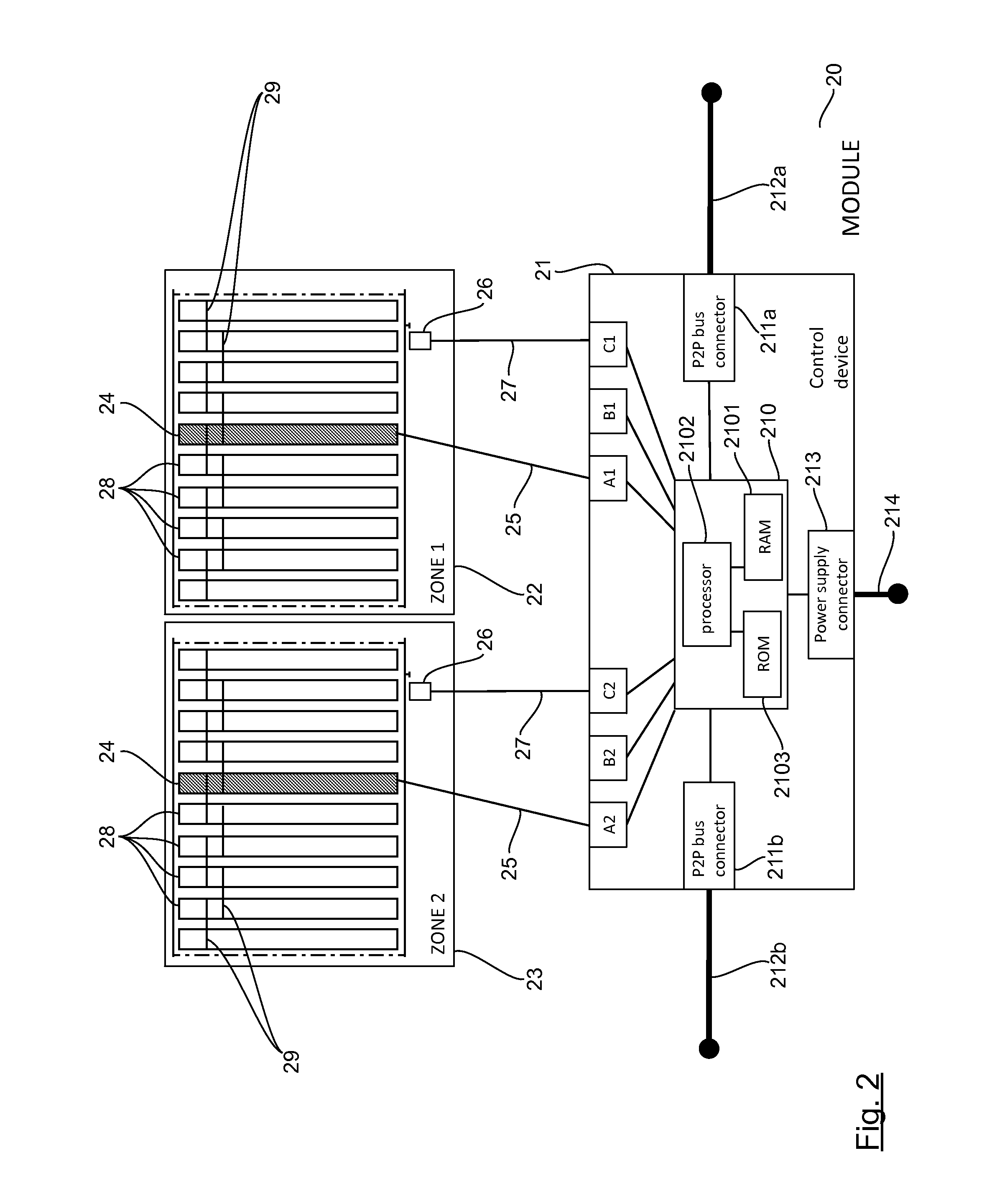Modular conveyor system and corresponding method
a conveyor system and module technology, applied in the field of module-based conveyancing or conveying systems, can solve the problems of inability to dynamically adapt the controlling of each control device, inability to provide for a simple way of making available information on the entire section, and inability to achieve optimal decentralization of control. , to achieve the effect of facilitating the migration of modules
- Summary
- Abstract
- Description
- Claims
- Application Information
AI Technical Summary
Benefits of technology
Problems solved by technology
Method used
Image
Examples
Embodiment Construction
[0076]In all the figures of the present document, the identical elements and steps are designated by a same numerical reference.
[0077]Referring now to FIG. 2, we present a module 20 according to one particular embodiment of the invention.
[0078]The module 20 is a double module comprising a control device 21 and two zones 22, 23 (also denoted as “zone 1” and “zone 2”) associated with and controlled by the control device 21.
[0079]Each zone 22, 23 comprises:[0080]a drive roller (actuator) 24 receiving, through a link 25, a command signal coming from the control device 21;[0081]slave rollers 28, driven in cascade by the drive roller 24 via transmission belts 29; and[0082]a sensor 26 sending, via a link 27, a presence signal 27 towards the control device 21.
[0083]In variants, each zone can include several actuators (instead of only one) and one or more sensors (instead of only one).
[0084]The control device 21 comprises:[0085]a control unit 210 (see detailed description here below);[0086]t...
PUM
 Login to View More
Login to View More Abstract
Description
Claims
Application Information
 Login to View More
Login to View More - R&D
- Intellectual Property
- Life Sciences
- Materials
- Tech Scout
- Unparalleled Data Quality
- Higher Quality Content
- 60% Fewer Hallucinations
Browse by: Latest US Patents, China's latest patents, Technical Efficacy Thesaurus, Application Domain, Technology Topic, Popular Technical Reports.
© 2025 PatSnap. All rights reserved.Legal|Privacy policy|Modern Slavery Act Transparency Statement|Sitemap|About US| Contact US: help@patsnap.com



